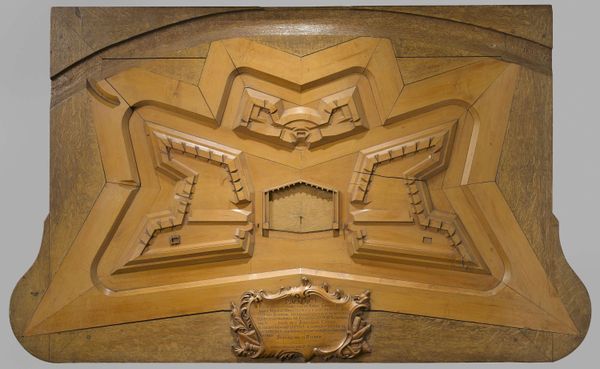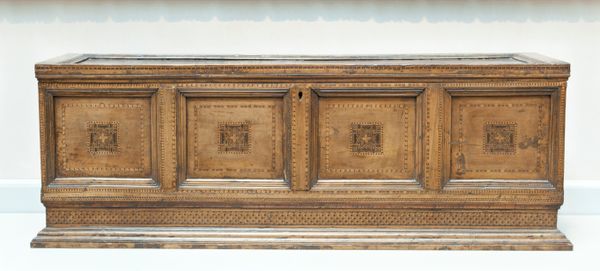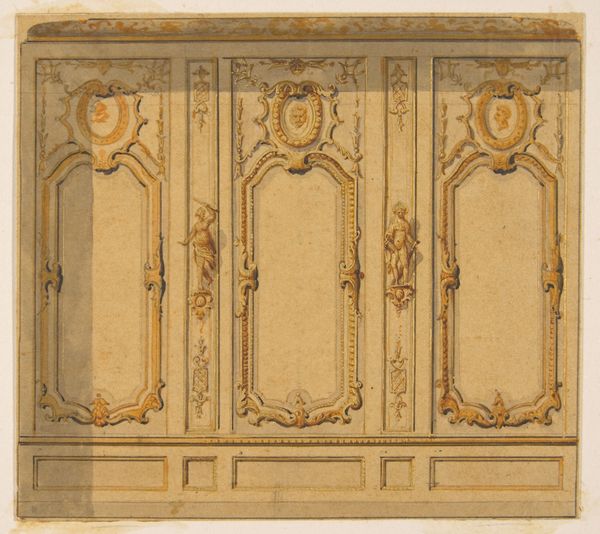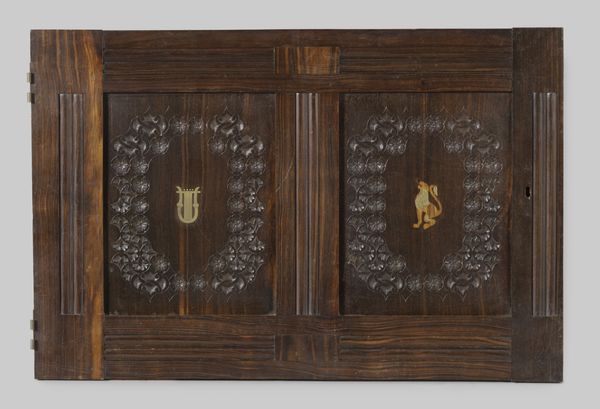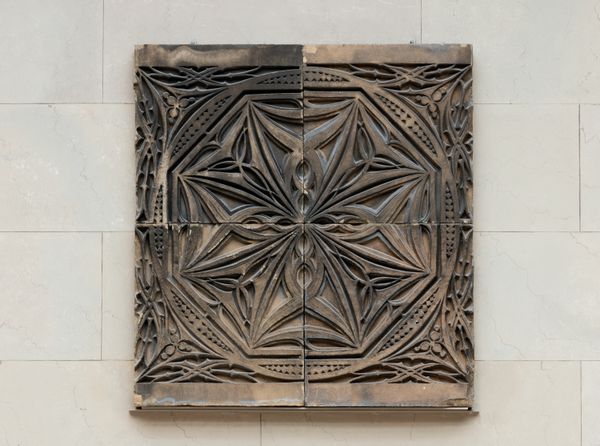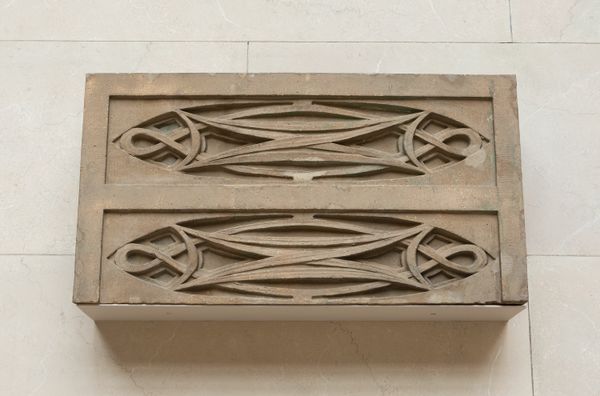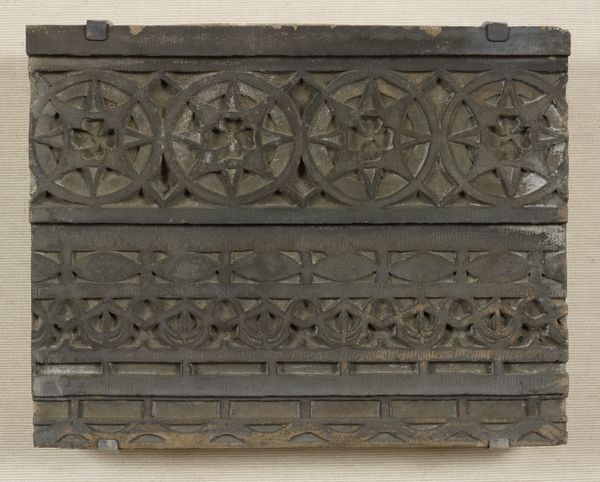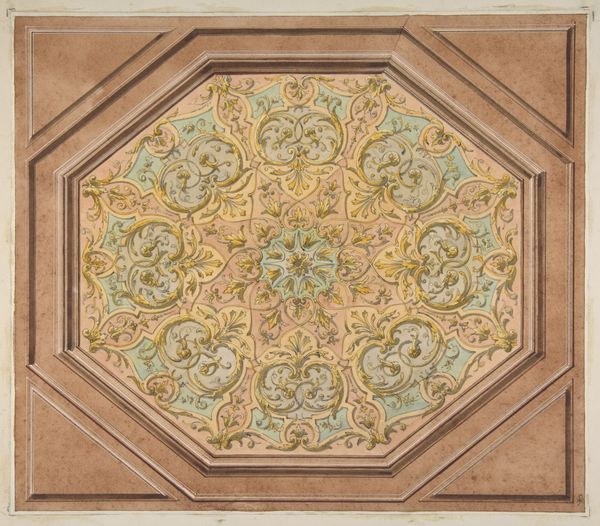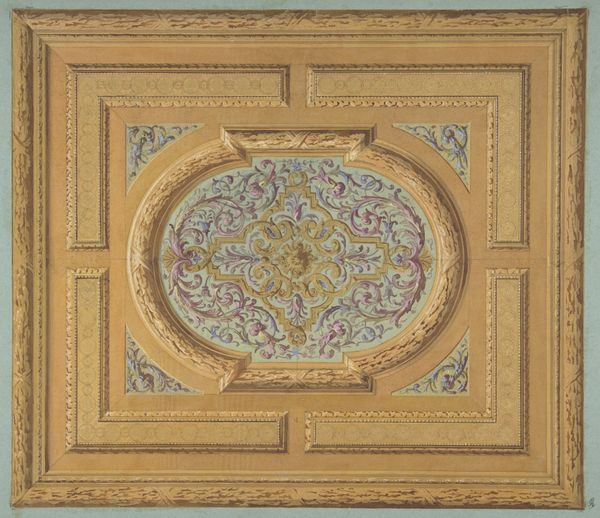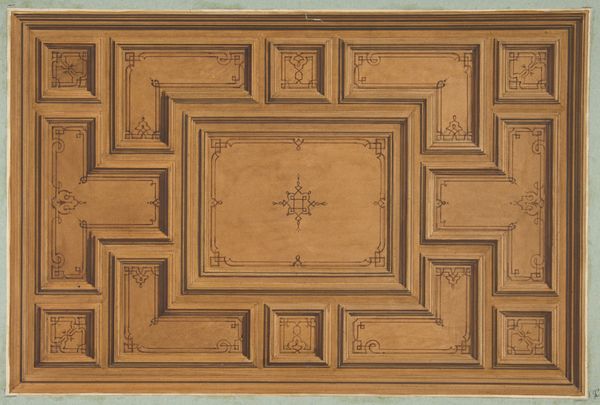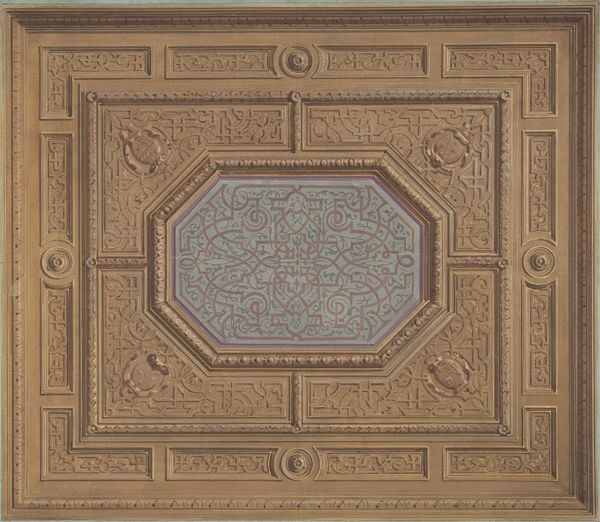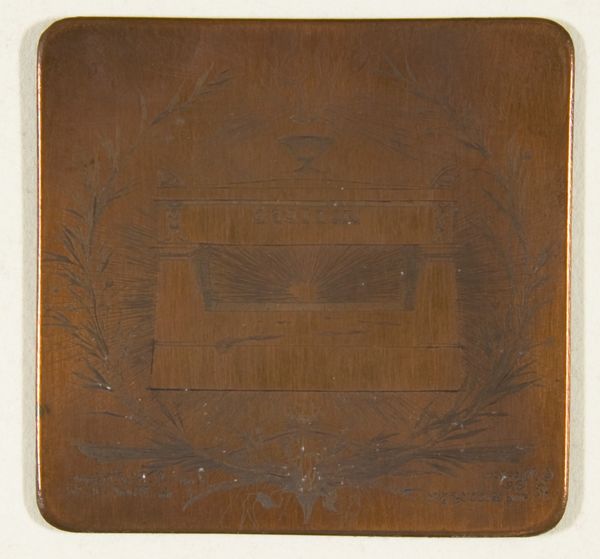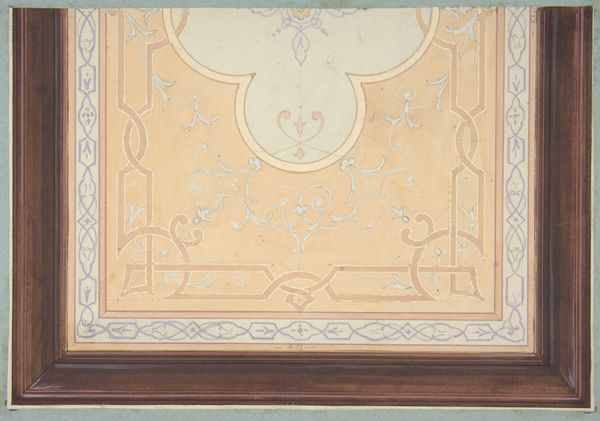
sculpture, wood, architecture
#
medieval
#
sculpture
#
sculpture
#
wood
#
architecture
Dimensions: height 68.4 cm, width 100.5 cm, depth 2.8 cm
Copyright: Rijks Museum: Open Domain
Curator: Here we have "Two Models of Fort Leyden," crafted by Hendrick Lotsy in 1769. It's an intricate sculpture, primarily wood, and showcases aspects of architecture. What's your immediate impression? Editor: My eye is drawn to the sheer precision of it all. The repeating geometric shapes, the clean lines...it's surprisingly modern for something from the 18th century. There's a coldness too, almost clinical. Curator: Well, consider that this was a scale model, perhaps used in military planning. Fortification was a crucial element of state power. Towns literally rose and fell based on their defenses. Editor: True, and those sharp angles and deliberate layers clearly served a specific function. Semiotically, each element speaks to strategies of defense and control. I am curious, though, about the wood itself...did Lotsy chose that wood because it reflects specific political consideration? Curator: What’s particularly interesting to me is where it situates in 18th-century artistic production: practical, yes, but still a beautiful and lasting testament to Leiden’s history of resilience. Editor: From a purely formal perspective, look how light and shadow interact with the carvings, the ways each layer recedes… It makes this piece come to life, even if it represents something static. Curator: That dynamism reminds us that fortresses aren’t static entities; they're subject to shifts in power. This piece could almost be read as an embodiment of the Netherlands's ongoing struggle to protect itself during times of political change. Editor: I appreciate how your approach encourages considering the politics, which is reflected formally, such as in its cold geometrical precision and how they serve those socio-political aims. Thank you. Curator: And I value your take on the aesthetic details. They enhance our appreciation.
Comments
rijksmuseum about 2 years ago
⋮
During the second half of the 18th century, ever more plantations arose along the Commewijne River in Suriname. Fort Leyden was built at the mouth of the river to protect the new settlements from attacks from the water. These wooden models were sent from the Netherlands to Suriname as examples for the construction of the stronghold.
Join the conversation
Join millions of artists and users on Artera today and experience the ultimate creative platform.
